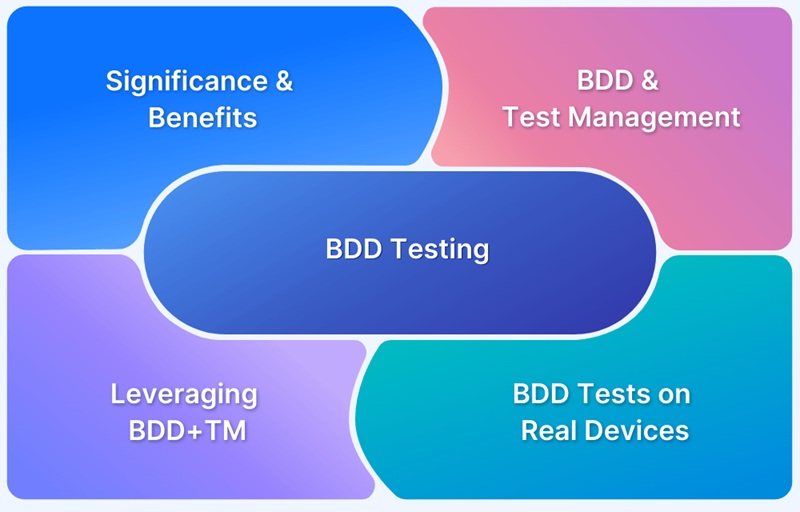Software testing is becoming an essential component of how companies make sure their systems operate as users would expect them to, rather than only being a backroom technical activity. The gap between what developers actually create and what business stakeholders imagine, however, still exists in many situations. At this point, the potential of enterprise testing tools in conjunction with BDD testing becomes evident. Tests may be written in easily understood English that is accessible to anyone, from QA analysts to product managers, rather than using technical jargon or obscure error reports. Let’s examine five sincere ways that this partnership improves business alignment and software delivery.
- Converts Business Needs into Unambiguous, Useful Tests
Traditional testing techniques sometimes have translation gaps in the process from requirement to verification. Business objectives are expressed in ambiguous bullet points and then translated into code-based test cases that might not accurately represent the original purpose. By allowing teams to design scenarios in simple, organised language, usually utilising the “Given-When-Then” paradigm, BDD alters that. These human-readable test scripts become executable when connected to an enterprise testing platform, guaranteeing that each test represents a business rule rather than merely a technical condition.
- Keeps Everyone in Constant Communication — Taken literally
When teams don’t communicate in the same language, misalignment occurs. Stakeholders evaluate outputs, developers create features, and testers verify them; nonetheless, their viewpoints hardly ever coincide. The same test cases may be reviewed by all stakeholders when BDD is integrated into corporate testing solutions. Its simplicity is its beauty: expectations are communicated to everyone in a single scenario written in a common language. Business users who were previously excluded from the testing process now have clarity and a sense of ownership as the communication curve is lowered.
- Promotes Cooperation Right Away
Testing is all too frequently neglected and rushed after code is written. Including testers, developers, and business stakeholders in discussions from the beginning promotes a shift-left mentality, which is encouraged by BDD. Early BDD scenario writing enables enterprise testing tools to start verifying business expectations before full development is finished. This proactive approach minimises rework, makes assumptions visible early, and guarantees that testing is in line with actual use cases rather than merely backend code.
- Facilitates Reading and Maintaining Test Suites
It takes time, often too much, to comprehend the objective of a test script that is full of technical terms. It is simpler to comprehend, edit, and reuse BDD scenarios that are written in comprehensible language. This facilitates the speedy onboarding of new team members and helps testers avoid repeating efforts. An enterprise testing platform guarantees a clear structure, version control, and a dependable method of managing testing across expanding applications when those BDD scripts are arranged within it.
- Increases Organisational Trust in Testing
When people understand something, they are more inclined to believe it. An enterprise testing tool’s dashboard displays a well-structured BDD test that clearly explains the following: “Given a user logs in, When they submit a form, Then they see a confirmation.” No guessing or translation is necessary. Everyone, including the compliance team, leadership, and QA, can see what is being tested and why. This openness increases trust in the platform, the process, and the final output.
Conclusion
Using an enterprise testing tool in conjunction with BDD not only improves processes but also changes the fundamental nature of testing. Businesses bridge the gap between vision and reality when tests are written in the language of business and run with the help of enterprise-grade automation. Because of this collaboration, testing is no longer only a task on a checklist but rather a shared duty and a key component of quality.
Platforms like Opkey are making BDD testing accessible with no-code interfaces, allowing anybody to develop, execute, and automate scenarios with Gherkin scenarios without technical skills in response to business and QA teams’ need for greater autonomy. Without creating a single line of code, Opkey’s no-code BDD capabilities provide you with the best of both worlds: complete team alignment and strong automation.


